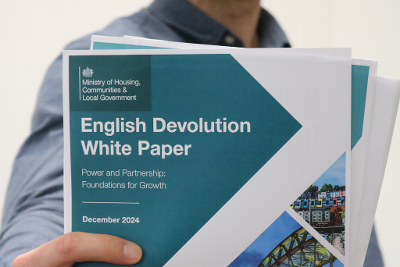A Guide to Norfolk Devolution and Local Government Changes

In December 2024, the Government published the English Devolution White Paper (opens new window), which sets out their ambition for universal devolution and local government reorganisation across England. Subsequently, Norfolk and Suffolk (via their respective county councils but without the involvement of districts, towns or parishes) voted in favour of applying for the Devolution Priority Programme. This programme fast tracks our region towards both devolution and a potential fundamental shakeup of the way local government services are delivered.
In early February, Norfolk and Suffolk were accepted onto the priority programme and were informed that local elections scheduled for May 2025 would be postponed in order to "deliver devolution to [an] ambitious timetable". The Minister of State for Local Government and English Devolution then wrote to all two tier authorities (opens new window), requiring them to submit proposals for reorganisation into unitary authorities. In Norfolk and Suffolk, the deadline for interim proposals for reorganisation is the 21st of March, with final proposals due on the 26th of September.
What is 'devolution'?
Devolution means transferring powers, functions and funding out of Westminster to local leaders who, in theory, have a greater knowledge of what the priorities in their area are. This may include responsibility for a range of areas, including economic growth, housing delivery, strategic planning, transport, skills, and more. Mayors will also have the power to raise their own council tax precept and will have the opportunity to sit on the Council of the Nations and Regions, chaired by the Prime Minister.
In Norfolk and Suffolk, the Government have said that they intend to create the post of a Mayor, who will sit at the head of what is known as a 'Strategic Authority' (SA). SA's will have constituent members, who are representatives from councils within that area. Districts have not been included as constituent members, but the county council have. If district and county councils are abolished, new unitary authorities will become constituent members.
You can read more about what powers the new Mayor will have in the Government's consultation document (opens new window).
Devolution is not a new concept. Mayors have been created previously in areas like London, Manchester and the West Midlands. However, the Devolution White Paper was the first time that the Government have said that they expect every area in England to have a mayor and a new Strategic Authority.
What is Local Government Reorganisation?
Local Government Reorganisation, also known as Local Government Reform or LGR, refers to be process whereby existing councils (districts, boroughs, cities and counties) are abolishes and replaced by unitary authorities.
These unitary authorities will operate over a larger area than existing districts and will take on the functions of both districts/boroughs/cities and county councils, thereby changing them from 'two tier' local government systems to 'single tier' systems.
The Government have said that new unitary councils should have a population of over half a million people. However, some have suggested that a new unitary council should cover the entirety of Norfolk, a population of over 925,000. As a result of these changes, many council services will be delivered across a larger geography by much larger organisations.
The Government have said that LGR will create efficiencies. However, elsewhere in the country, it has proved to be a costly, lengthy, and complex process.



